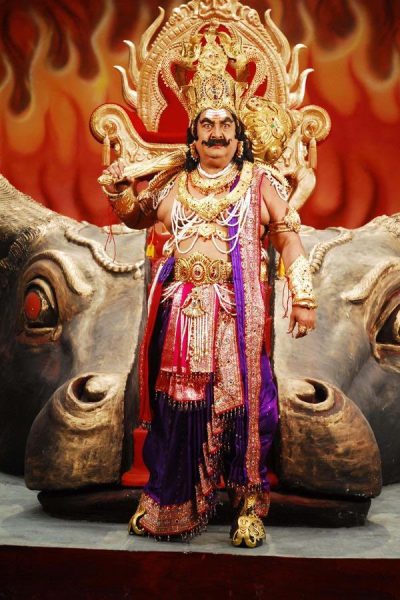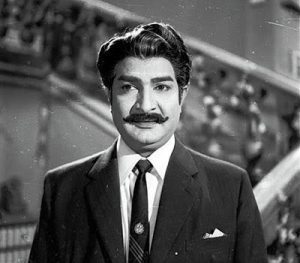
Kaikala Satyanarayana: Few could match his versatility on screen
Satyanarayana’s chequered movie career held a mirror to the evolution of Telugu movies from the 1960s to the present day

Versatile Telugu actor Kaikala Satyanarayana, who died on Friday (December 23), was popular among the Telugu audience as ‘Navarasa Natana Sarvabhowma’ — an apt title that summarised his ability to get into the skin of any role. He could be the wicked villain in one film, the doting father in the other, or the caring brother, affectionate grandfather or comical Yama with effortless ease.
Satyanarayana, who acted in about 750 films in a career spanning six decades, passed away early this morning at his Film Nagar residence in Hyderabad. He was 87 and had been bedridden for quite some time with post-COVID complications and age-related issues.
The veteran actor was born on July 15, 1935 in Kavutaram village in Andhra Pradesh’s Krishna district. In the 1950s, he attempted to enter the Telugu film industry. Satyanarayana’s chequered movie career holds a mirror to the evolution of Telugu movies from the 1960s to the present day.
Yearender: South Indian films that bombed big time at the box-office in 2022
From the mid-1950s to the 1970s, Telugu movies took to portraying the survival struggle of joint families, which were on the verge of disintegration. Dozens of films spoke about the struggle within families, between those who wanted to keep the unit intact and those who were determined to break free from it in tune with the times. The movies invariably hailed the virtues of keeping the extended family intact under one roof.
Social themes, family dramas
Until then, mythological and folklore had been ruling the roost. Experiments on social themes were made by adapting stage plays and novels into movies such as Pelli Chesi Chudu (‘Try conducting a wedding’) (1952), Missamma (1955), Devadasu (1953), Puttillu (‘Birthplace’) (1953), Pedda Manushulu (‘Respectable people’) (1954), Rojulu Marayi (‘The days have changed’) (1955), Ardhangi (‘Other half’) (1955), and Thodi Kodallu (‘Daughters-in-law’) (1957).

The trend gained momentum in the 1960s, giving rise to a new genre of family dramas. The Telugu movie world was in dire need of a new kind of villain with a burly body and vicious looks. Popular villain R Nageswara Rao had died in 1959. Rajanala Kaleswara Rao was then the leading villain.
It was at this juncture that Satyanaryana debuted as a lead character with the movie Sipai Kuturu (1959), which was a disappointment. Distraught with that failure and with the minor roles he got subsequently (such as Sahasra Sirachheda Apoorava Chintamani), Satayanarayana was planning to go back home. He took on ‘dupe’ (body double) roles for NT Rama Rao, as he resembled the stalwart, but that did not help gain a foothold in the industry.
Yearender: 19 controversies that rocked South Indian film industries in 2022
But, an offer to play a negative role in Vittalacharya’s Kanakadurga Pooja Mahima (1960) proved to be a turning point. It was Vittalacharya who asked Satyanarayana to take up negative roles in the changing environment. And a new villain was born on the Telugu silver screen.
Vile, wicked, and successful
The wicked, vile, atrocious and scary roles he successfully played brought him such notoriety that he got the moniker ‘Repula Satyanarayana’ (Rapes Satyanarayana). Rape was the final tool for a villain who wanted to take revenge or demonstrate his dominance over the village. Talking to a Telugu newspaper, Satyanarayan once revealed that at a private function, he was accosted by a group of women who criticised him sharply for the heinous crimes he had committed on the sisterhood on screen.
Such a bad guy in one fell swoop transformed into a loving brother and stole the hearts of Telugu women in 1973 with Sarada. In that film, the lead female character dies in the arms of her brother after an insurmountable tragedy. Overnight, it transformed Satyanarayana into a character actor second to none in the industry.
He enthralled the Telugu audience with a myriad of roles — father, grandfather, brother, a hilarious Yama, Ghatotkacha, and so on. He joined the league of SV Rangarao and Gummadi to make Tollywood’s triumvirate.
Political foray that didn’t go well
The next generational tumult in Tollywood affected his career, too, like many others of his generation. He made an entry into politics and, in 1996, was elected to the Lok Sabha as a TDP nominee from Machilipatnam constituency. Some think his political foray, though brief, marked his not keeping up with the times. He gradually disappeared from the screen, never to contest elections again.
According to noted film critic Jyosyula Suryaprakash, the main factor for decline of Satyanarayana’s stardom was the redundancy of the roles he played. “He was a towering personality in the era of family dramas where father, brother and grandfather were revered. These characters were knitted deeply into the story. Such passionate characters are out of fashion now. Even though these characters do exist now they do not fall in the category as the ones donned by SV Rangarao, Gummadi and Satyanarayana. This inevitable shift pushed him into oblivion,” Surya Prakash told The Federal.
Curiously, though he was decorated with a number of regional honours, Satyanarayana was never given the Padma award. Kaikala Satyanarayana: Few could match his versatility

